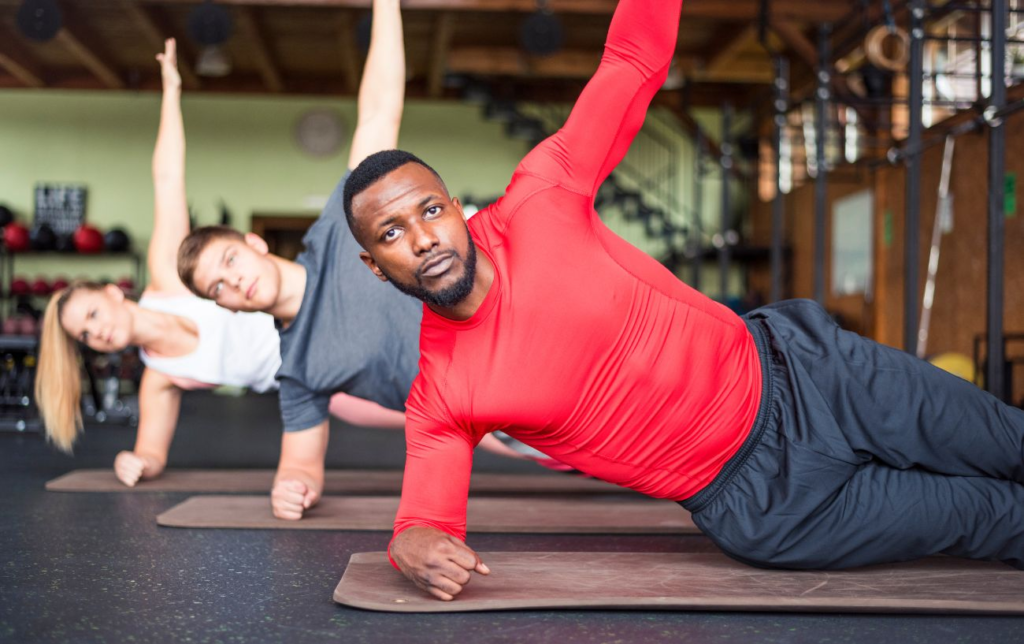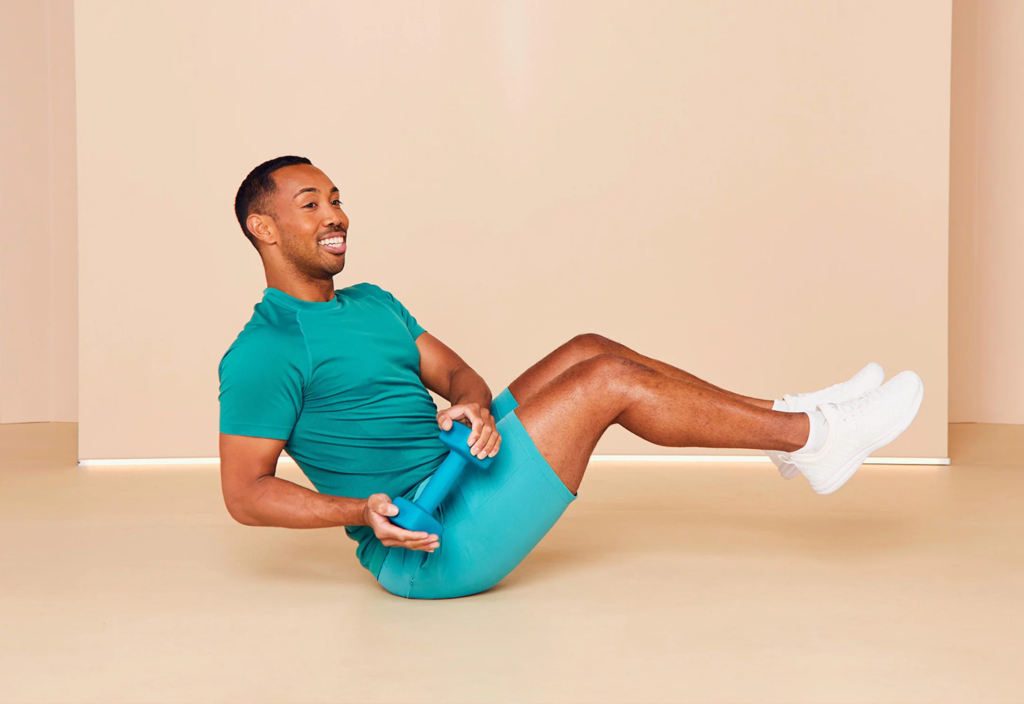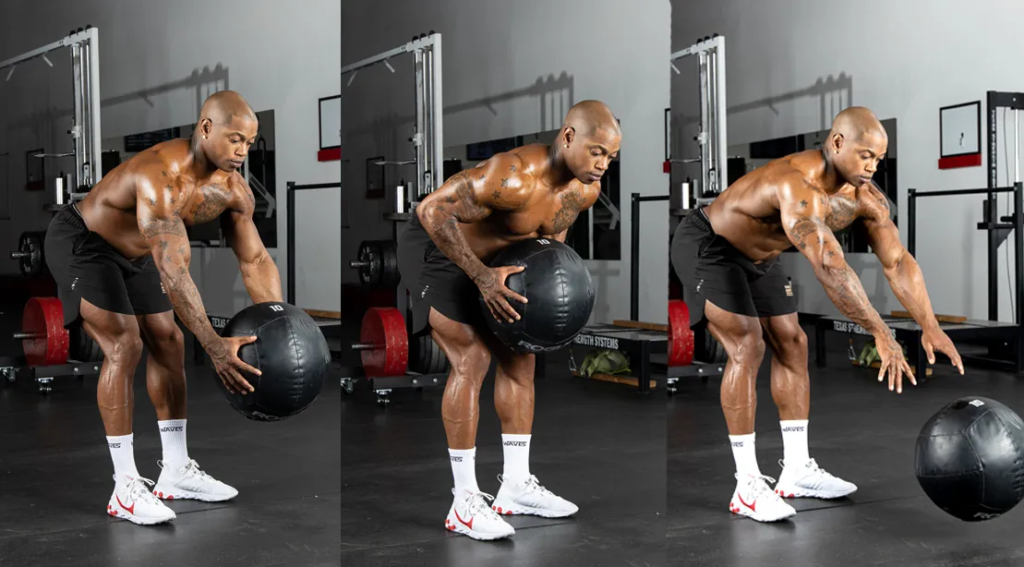Discover the best functional core exercises to enhance your strength, stability, and performance in everyday activities. Learn how to incorporate these top 10 core moves into your workout routine for better posture, balance, and injury prevention.
Table of Contents
In the world of fitness, focusing on functional core exercises is crucial for improving overall strength, stability, and daily performance. Unlike traditional ab workouts, functional core exercises target the muscles in your abdomen, lower back, and pelvis, which are essential for everyday movements. Whether you’re lifting groceries, playing sports, or simply maintaining good posture, a strong core is vital. In this post, we’ll explore some of the best functional core exercises to incorporate into your workout routine.
What Are Functional Core Exercises?
Functional core exercises are movements that mimic the activities of daily life and improve your ability to perform everyday tasks. These exercises engage multiple muscle groups, enhancing coordination and balance. Unlike isolated ab workouts, functional core exercises train your core to work in harmony with the rest of your body, making you more efficient and less prone to injuries.
The Anatomy of the Core
To fully appreciate the benefits of functional core exercises, it’s important to understand the anatomy of the core. The core includes more than just the abs; it encompasses the muscles of the trunk and pelvis, including:
- Rectus Abdominis: Often referred to as the “six-pack” muscles, these are responsible for flexing the lumbar spine.
- Transverse Abdominis: The deepest layer of abdominal muscles that provide stability to the spine and pelvis.
- Internal and External Obliques: These muscles run along the sides of the abdomen and are responsible for trunk rotation and lateral flexion.
- Erector Spinae: A group of muscles running along the spine that help with extending and rotating the back.
- Multifidus: Small muscles that help stabilize the vertebrae.
- Pelvic Floor Muscles: These muscles support the organs in the pelvis and are crucial for core stability.
- Diaphragm: Plays a role in breathing and core stabilization.
Why Focus on Functional Core Exercises?
While traditional ab exercises like crunches and sit-ups target specific muscles, they don’t necessarily translate to improved functional movement. Functional core exercises, on the other hand, train the core muscles to work together as a cohesive unit. This integrated approach enhances your ability to perform complex movements that involve multiple joints and muscle groups.
Benefits of Functional Core Exercises
Improved Stability and Balance
A strong core stabilizes your body, reducing the risk of falls and injuries. Whether you’re walking on uneven terrain, reaching for something overhead, or balancing on one foot, your core muscles work to keep you steady. Functional core exercises enhance proprioception (the body’s ability to sense its position in space), which is crucial for maintaining balance.
Enhanced Performance in Daily Activities
From lifting objects to bending and twisting, a strong core makes everyday tasks easier. Functional core exercises mimic the movements you perform daily, such as reaching, twisting, and lifting. By strengthening the muscles involved in these actions, you’ll find that you can perform them more efficiently and with less effort.
Better Posture
Functional core exercises help maintain proper alignment of the spine, preventing back pain and improving posture. A strong core supports the natural curvature of the spine, which is essential for good posture. When your core muscles are weak, you’re more likely to slouch or adopt poor posture, which can lead to discomfort and injury over time.
Injury Prevention
Strengthening your core reduces the likelihood of injuries, especially in the lower back. Many lower back injuries are the result of poor core stability and improper lifting techniques. Functional core exercises train your body to use the correct muscles and maintain proper alignment, reducing the risk of injury.
Enhanced Athletic Performance
For athletes, a strong core is essential for optimal performance. Functional core exercises improve power, agility, and endurance. Whether you’re a runner, cyclist, swimmer, or participate in team sports, a strong core enhances your ability to generate force, maintain stability, and perform at your best.
Top 10 Functional Core Exercises
Now that we understand the importance of functional core exercises, let’s dive into some of the most effective movements you can incorporate into your routine.
1. Plank Variations
Planks are excellent for building core strength. They engage multiple muscle groups, including the rectus abdominis, transverse abdominis, obliques, and lower back. Here are some variations to keep your routine challenging and effective:
Standard Plank
- How to Perform: Hold a push-up position with your body in a straight line from head to heels. Your elbows should be directly under your shoulders, and your core should be engaged.
- Benefits: This exercise strengthens the entire core, including the shoulders and glutes.
- Tips: Avoid letting your hips sag or your back arch. Maintain a neutral spine throughout the exercise.
Side Plank
- How to Perform: Lie on your side and lift your hips off the ground, balancing on one forearm and the side of one foot. Your body should form a straight line from head to heels.
- Benefits: Side planks target the obliques and improve lateral stability.
- Tips: Keep your hips lifted and avoid letting them drop towards the floor. Engage your glutes and legs to maintain balance.
Plank with Shoulder Tap
- How to Perform: Start in a standard plank position. Lift one hand to touch the opposite shoulder, alternating sides.
- Benefits: This variation challenges your balance and stability, engaging the core muscles more intensively.
- Tips: Keep your hips steady and minimize any rotation in your torso as you lift your hand.

2. Bird Dog
The bird dog exercise enhances stability, coordination, and balance by engaging both the core and the muscles of the back and glutes.
- How to Perform: Start on all fours with hands under shoulders and knees under hips. Extend one arm forward and the opposite leg backward, keeping your core engaged. Return to the starting position and switch sides.
- Benefits: This exercise improves coordination and strengthens the lower back and glutes.
- Tips: Keep your hips level and avoid arching your back. Focus on controlled movements and engage your core throughout the exercise.
3. Russian Twists
Russian twists are great for targeting the oblique muscles and improving overall core rotation.
- How to Perform: Sit on the floor with knees bent and feet flat. Lean back slightly while keeping your back straight. Hold a weight or a medicine ball and twist your torso to one side, then the other.
- Benefits: This exercise enhances rotational strength and stability.
- Tips: Keep your back straight and avoid rounding your shoulders. Move slowly and control the rotation to maximize the effectiveness.

4. Dead Bug
The dead bug exercise is perfect for targeting deep core muscles and improving overall stability.
- How to Perform: Lie on your back with arms extended towards the ceiling and knees bent at 90 degrees. Lower one arm and the opposite leg towards the floor while keeping your back flat against the ground. Return to the starting position and switch sides.
- Benefits: This exercise strengthens the transverse abdominis and enhances coordination.
- Tips: Keep your lower back pressed into the floor to avoid arching. Move slowly and maintain control throughout the exercise.
5. Standing Cable Rotation
Standing cable rotations engage the entire core, especially the obliques, and are great for improving rotational strength.
- How to Perform: Stand with feet shoulder-width apart and hold a cable or resistance band with both hands at chest height. Rotate your torso to one side, then the other.
- Benefits: This exercise improves rotational power and core stability.
- Tips: Keep your hips stable and avoid rotating your lower body. Focus on engaging your core and controlling the movement.

6. Medicine Ball Slams
Medicine ball slams are an explosive exercise that builds power and strength in the core and upper body.
- How to Perform: Stand with feet shoulder-width apart and hold a medicine ball above your head. Slam the ball down to the ground with force, engaging your core throughout the movement.
- Benefits: This exercise enhances explosive power and engages the entire core.
- Tips: Use a medicine ball that bounces minimally to maximize the effectiveness. Keep your back straight and avoid arching as you slam the ball.

7. Pall of Press
The Pall of press is excellent for building anti-rotation strength and stability in the core.
- How to Perform: Stand perpendicular to a cable machine or resistance band anchor point. Hold the handle with both hands at chest height and step away from the anchor to create tension. Press the handle straight out in front of you, resisting the rotation, and return to the starting position.
- Benefits: This exercise targets the deep core muscles and improves overall stability.
- Tips: Keep your hips and shoulders square, and avoid rotating your torso. Engage your core to resist the pull of the cable or band.
8. Hollow Body Hold
The hollow body hold builds deep core strength and endurance, making it a favorite among gymnasts and athletes.
- How to Perform: Lie on your back with arms extended overhead and legs straight. Lift your arms, head, shoulders, and legs off the ground, creating a ‘hollow’ shape with your body.
- Benefits: This exercise strengthens the entire core, including the lower back and hip flexors.
- Tips: Keep your lower back pressed into the floor and maintain a tight, hollow position. Avoid arching your back or letting your legs drop too low.
9. Lateral Medicine Ball Throws
Lateral medicine ball throws improve rotational power and coordination, making them great for athletes.
- How to Perform: Stand sideways to a wall with a medicine ball in your hands. Rotate your torso and throw the ball against the wall, catching it on the rebound.
- Benefits: This exercise enhances rotational strength and power.
- Tips: Use a controlled, powerful throw, and engage your core to drive the movement. Catch the ball smoothly and prepare for the next throw.
10. Farmer’s Walk
The farmer’s walk is a functional exercise for overall body strength, focusing on core stability and grip strength.
- How to Perform: Hold a heavy weight in each hand and walk forward, keeping your torso upright and core engaged.
- Benefits: This exercise strengthens the entire body, particularly the core, shoulders, and grip.
- Tips: Maintain an upright posture and avoid leaning forward. Engage your core and walk with controlled, steady steps.
How to Incorporate Functional Core Exercises into Your Routine
To get the most out of these exercises, include them in your workout routine 2-3 times per week. How to build muscle and lose fat in 2024 Full Guide For Beginners Start with a few exercises and gradually increase the number and intensity as your core strength improves. Here’s a sample workout plan to get you started:
Sample Functional Core Workout
- Warm-Up: 5-10 minutes of light cardio (e.g., jogging, jumping jacks) to increase your heart rate and prepare your muscles for exercise.
- Plank Variations:
- Standard Plank: 3 sets of 30-60 seconds
- Side Plank: 3 sets of 30-60 seconds each side
- Bird Dog: 3 sets of 10-12 reps each side
- Russian Twists: 3 sets of 15-20 reps each side
- Dead Bug: 3 sets of 10-12 reps each side
- Standing Cable Rotation: 3 sets of 10-12 reps each side
- Medicine Ball Slams: 3 sets of 10-15 reps
- Pallof Press: 3 sets of 10-12 reps each side
- Hollow Body Hold: 3 sets of 20-30 seconds
- Lateral Medicine Ball Throws: 3 sets of 10-12 reps each side
- Farmer’s Walk: 3 sets of 30-60 seconds
Progression and Variations
As you get stronger, you can increase the difficulty of these exercises by adding weight, increasing the duration, or incorporating more advanced variations. For example, you can perform the plank with leg lifts, add a twist to the bird dog, or use a heavier medicine ball for slams.10 Effective Cable back exercises
Combining Functional Core Exercises with Other Workouts
Functional core exercises can be integrated into various types of workouts, including strength training, HIIT (High-Intensity Interval Training), and cardio sessions. Here’s how you can incorporate them into different workout routines:
Strength Training
Add functional core exercises at the beginning or end of your strength training workouts. This ensures that your core is engaged and activated before you start lifting weights, improving your overall performance and reducing the risk of injury. the Art of Weight Lifting Bars: A Comprehensive Guide
HIIT Workouts
Include functional core exercises in your HIIT circuits. For example, you can perform 30 seconds of a functional core exercise, followed by 30 seconds of a cardio move (like burpees or jumping jacks), and repeat for several rounds.
Cardio Workouts
Incorporate core exercises into your cardio sessions to add variety and challenge. For instance, after every 5 minutes of running or cycling, stop and perform a core exercise for 1-2 minutes.
Listening to Your Body
It’s important to listen to your body and progress at your own pace. If you experience any pain or discomfort, stop the exercise and consult with a fitness professional. Remember, consistency is key to seeing results, so make functional core exercises a regular part of your fitness routine.
Conclusion
Functional core exercises are essential for building a strong foundation that supports all your movements. By incorporating these exercises into your fitness routine, you’ll improve your stability, balance, and strength, making everyday activities easier and reducing the risk of injuries. Start integrating these functional core exercises today and experience the benefits of a strong core.




